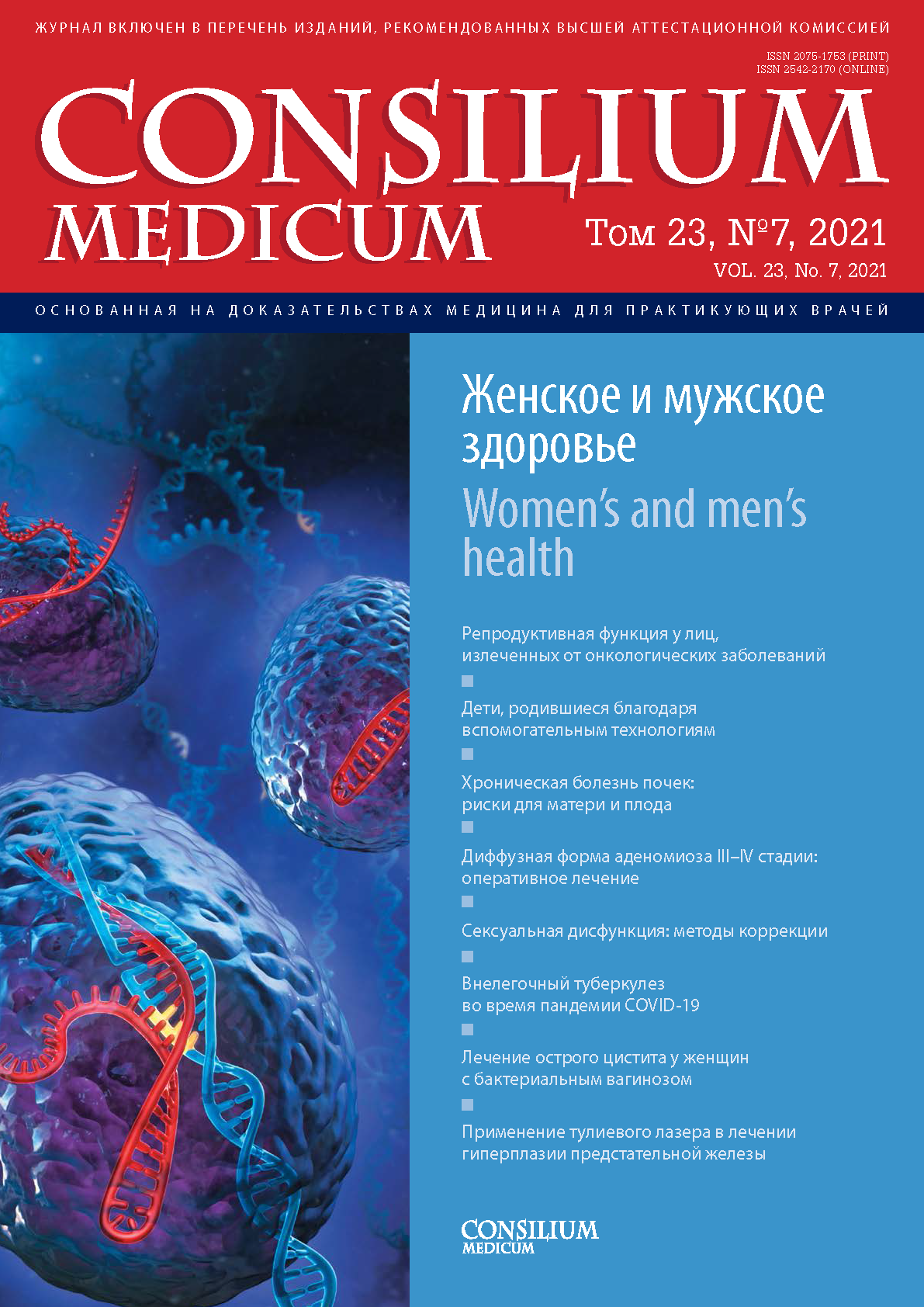Дети, родившиеся благодаря вспомогательным технологиям: фокус на репродуктивное здоровье родителей
- Авторы: Киншт Д.А.1, Соболева М.К.1
-
Учреждения:
- ФГБОУ ВО «Новосибирский государственный медицинский университет» Минздрава России
- Выпуск: Том 23, № 7 (2021)
- Страницы: 539-543
- Раздел: Статьи
- URL: https://journal-vniispk.ru/2075-1753/article/view/95483
- DOI: https://doi.org/10.26442/20751753.2021.7.200900
- ID: 95483
Цитировать
Полный текст
Аннотация
Полный текст
Открыть статью на сайте журналаОб авторах
Дарья Александровна Киншт
ФГБОУ ВО «Новосибирский государственный медицинский университет» Минздрава России
Email: dkinsht@gmail.com
ассистент каф. Новосибирск, Россия
Мария Константиновна Соболева
ФГБОУ ВО «Новосибирский государственный медицинский университет» Минздрава России
Email: m.k.soboleva@gmail.com
д-р мед. наук., проф., зав. каф. Новосибирск, Россия
Список литературы
- Bergh C, Wennerholm UB. Long-term health of children conceived after assisted reproductive technology. Ups J Med Sci. 2020;125(2):152-7.
- Fledderjohann J, Barnes LW. Reimagining infertility: a critical examination of fertility norms, geopolitics and survey bias. Health Policy Plan. 2018;33(1):3440.
- Luke B. Pregnancy and birth outcomes in couples with infertility with and without assisted reproductive technology: with an emphasis on US population-based studies. Am J Obstet Gynecol. 2017;217(3):270-81.
- Luke B, Brown MB, Wantman E, et al. The risk of birth defects with conception by ART. Hum Reprod. 2021;6(1):116-29.
- Лучко С.А., Михалевич С.И. Многоплодие после применения методов вспомогательной репродукции. Спорные вопросы. Медицинские новости. 2018;283(4):21-3
- Ma NZ, Chen L, Hu LL, et al. The influence of male age on treatment outcomes and neonatal birthweight following assisted reproduction technology involving intracytoplasmic sperm injection (ICSI) cycles. Andrologia. 2018;50(1). doi: 10.1111/and.12826
- Kocourkova J, Sidlo L, Stastna A, Fait T. Impact of the mothers age at childbirth on the birth weight of new-born children. Cas Lek Cesk. 2019;158(3-4):118-25.
- Wang JY, Li YS, Chen JD, et al. Investigating the relationships among stressors, stress level, and mental symptoms for infertile patients: a structural equation modeling approach. PLoS One. 2015;10(10):e0140581. doi: 10.1371/journal.pone.0140581
- Bhandari S, Ganguly I, Agarwal P, et al. Relationship of number of embryos transferred with perinatal outcome of singleton pregnancy. J Reprod Infertil. 2017;18(1):179-84
- Sullivan-Pyke CS, Senapati S, Mainigi MA, Barnhart KT. In Vitro fertilization and adverse obstetric and perinatal outcomes. Semin Perinatol. 2017;41(6):345-53.
- Berntsen S, Soderstrom-Anttila V, Wennerholm UB, et al. The health of children conceived by ART: “the chicken or the egg?” Hum Reprod Update. 2019;25(2):137-58.
- Hansen M, Bower C. The impact of assisted reproductive technologies on intra-uterine growth and birth defects in singletons. Semin. Fetal Neonatal Med. 2014;19(4):228-33.
- Zhu J, Zhu Q, Wang Y, et al. Comparative study on risk for birth defects among infants after in vitro fertilization and intracytoplasmic sperm injection. Syst Biol Reprod Med. 2019;65(1):54-60.
Дополнительные файлы






